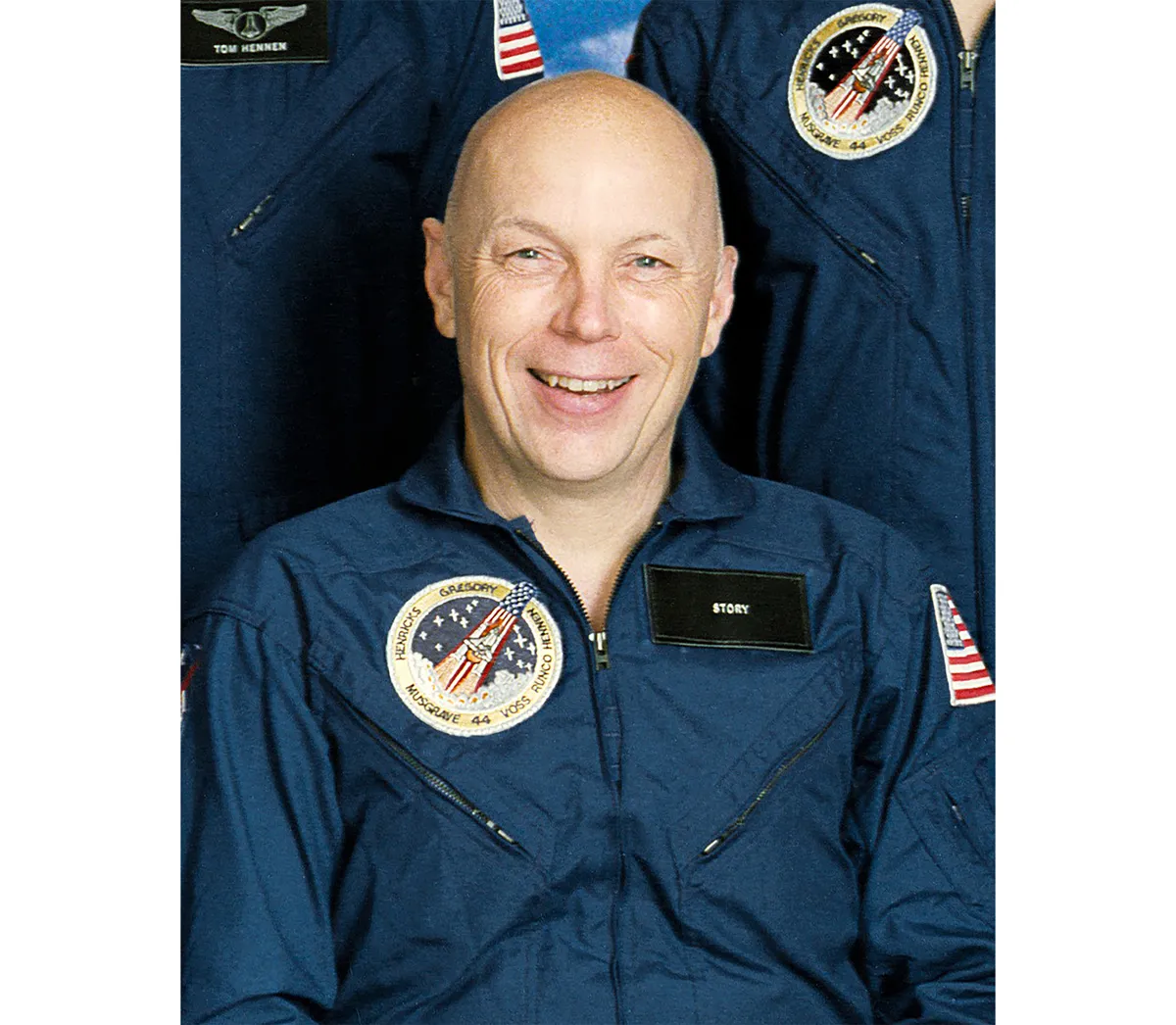A veteran of the US Marine Corps with academic degrees in six subjects, from maths to medicine, F. Story Musgrave became NASA’s preeminent authority on spacewalks. One of only a handful of astronauts to complete six space missions, he was payload commander on mission STS-61: the mission to fix the Hubble Space Telescope's mirror.
“The most important deployment in history; a huge mission. The whole world was waiting for the results,” says Story Musgrave of the STS-61 mission.
Musgrave, selected to lead the repairs on the mission, had previously communicated with the STS-31 crew from Mission Control and had worked on the space telescope since 1975.
Read more about Hubble's repairs:
- What was wrong with Hubble's mirror?
- 'How we serviced Hubble': Mike Massimino reveals all
- Why did astronauts service the Hubble Space Telescope?
“You never can tell if it was a natural selection,” he says, but having done the first-ever Shuttle spacewalk, he seemed a logical choice. “You’ve got to reward the people that do all the work.”
The repair mission had a record-breaking five spacewalks. “There were 13 systems broken, so that dictates the mission and what we could’ve done,” Musgrave explains. “I could’ve done back-to-back spacewalks every day for five or six days.”
Musgrave was also the oldest spacewalker, aged 58. “It’s no more than a day’s work,” he says.
“If it’s a demanding day’s work, you haven’t designed it right. You design it not to be special and not to be hard work, then you choreograph it.”
Musgrave choreographed every detail down to the last screw or bolt. “You design for not having physical strength. You reserve the physical strength for performance margin, but I’m a total wimp.

"I design them to be done by anybody without physical force, so you have margin if you run into a surprise.”
With his expertise, Musgrave should have been ‘EV1’, the chief spacewalker, but he rejected it.
“I tried to disempower myself, because if you’re too powerful the right answers don’t come,” he says. “People assume you’ve got the right answers and they don’t dare challenge the answers, so that’s why I refused the title of EV1.
"The best solution comes democratically. How Mission Control works is the whole team plays with the data, you challenge each other and finally converge on the right solution.” Musgrave wanted to be one of the gang.
Spacewalking was “…outrageous for sure”, especially working on the Shuttle’s robot arm.
“I was looking at the whole continent of Australia. The only sense of fear of heights that I have ever had in spaceflight was looking from the arm down into the payload bay and thinking I could fall.”
His four previous space missions as a flight engineer were totally different, carrying primary responsibility for Shuttle systems.
“They didn’t want any spacewalker on STS-61 to be the flight engineer. They wanted us to concentrate on fixing Hubble – to concentrate on the back of the bus.”
Ben Evans is a science and space writer. This article originally appeared in Hubble: 30 Years of Discovery, a new special edition magazine available now.